Intel Bundle
Who Really Owns Intel?
Unraveling the complexities of Intel's ownership is key to understanding its future. From its humble beginnings to its current status as a tech titan, Intel's ownership structure has evolved dramatically. The recent leadership changes at Intel, including the appointment of interim co-CEOs and a permanent CEO, underscore the importance of ownership in steering the company through turbulent times.
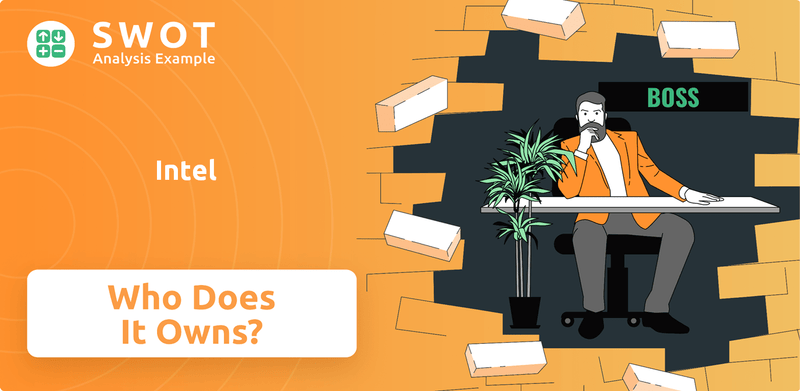
Founded in 1968, Intel SWOT Analysis is a global leader in the semiconductor industry. Understanding who owns Intel, including its major shareholders and the influence of the Intel CEO, is crucial for investors and anyone interested in the tech landscape. This analysis will explore the evolution of Intel's ownership, from its founders to its current stakeholders, providing insights into the company's governance and strategic direction. Knowing who is the current owner of Intel company and how to buy Intel stock can inform your investment decisions.
Who Founded Intel?
The story of Intel, a titan in the semiconductor industry, begins with its founders and initial ownership structure. Understanding this early framework is crucial to grasping the company's trajectory and its evolution into a global technology leader. The founders' vision and initial investments laid the groundwork for the company's future success.
Intel Corporation was born from the collaboration of semiconductor pioneers Gordon Moore and Robert Noyce, alongside investor Arthur Rock. Their combined expertise and financial backing were pivotal in establishing the company. The early decisions regarding ownership and leadership set the stage for Intel's innovative culture and its impact on the tech world.
The company was initially incorporated as NM Electronics on July 18, 1968, before changing its name to Intel, which stands for Integrated Electronics. This name change was crucial for branding and establishing the company's identity in the market.
Intel was co-founded by Gordon Moore, Robert Noyce, and Arthur Rock. Moore and Noyce were key figures in the semiconductor industry, and Rock provided crucial investment.
Initially incorporated as NM Electronics, the company quickly changed its name to Intel. The name change was essential for establishing a unique brand identity.
At its inception, Noyce and Moore each held a significant share of the company. Rock also played a key role in the initial ownership structure.
The initial capital for Intel was approximately $2.5 million, arranged by Arthur Rock. This funding was critical for launching the company.
Andrew Grove, another former Fairchild employee, joined shortly after the founding. Grove eventually succeeded Moore as CEO.
Early backers and investors, including Intel Capital, have supported various technology companies. This reflects a commitment to innovation.
The initial ownership structure of Intel involved Noyce and Moore each purchasing 245,000 shares at $1 per share, with Rock acquiring 10,000 shares. This early distribution of shares set the stage for the company's governance. Understanding who owns Intel and the early ownership structure is fundamental to understanding the company's history. The early investors in Intel, and the company's subsequent growth, are a testament to the power of strategic investment and visionary leadership. The company's journey from its inception to its current status as a global leader is a fascinating study in business and innovation. For more insights into the company's strategic approach, consider exploring the Marketing Strategy of Intel.
- The initial capital funding amounted to roughly $2.5 million.
- Andrew Grove became a pivotal leader shortly after the founding.
- Intel Capital has a long-standing commitment to supporting technology companies.
- The early ownership structure was key to the company's foundation.
Intel SWOT Analysis
- Complete SWOT Breakdown
- Fully Customizable
- Editable in Excel & Word
- Professional Formatting
- Investor-Ready Format
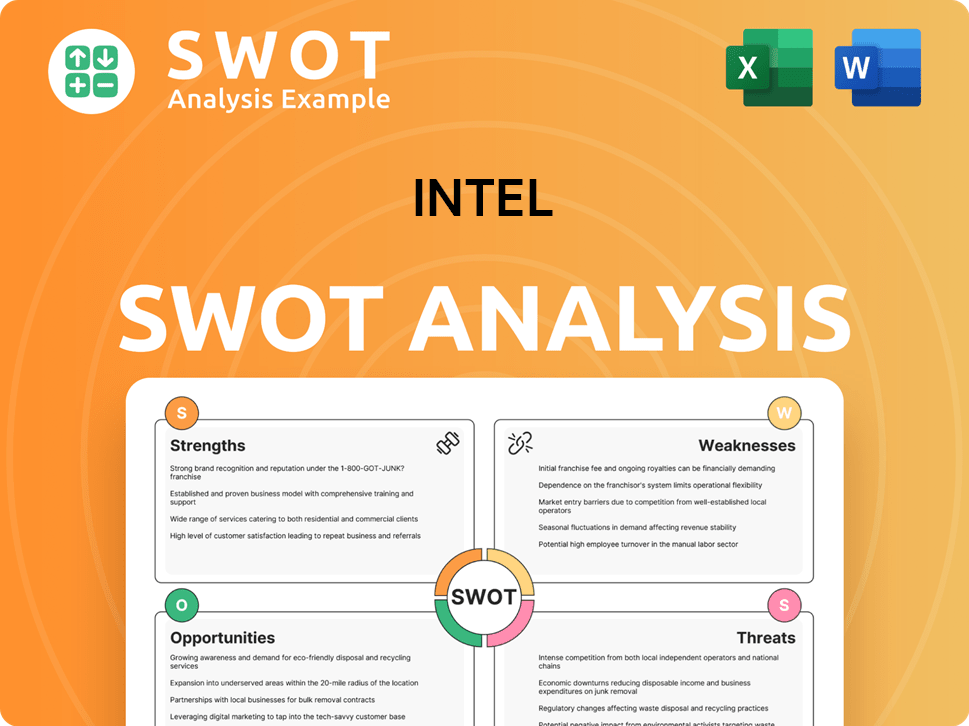
How Has Intel’s Ownership Changed Over Time?
The evolution of Intel's ownership structure has been shaped by key events since its initial public offering (IPO) on October 13, 1971. The IPO, with an initial price of $23.50 per share, raised $8.2 million. This marked the beginning of a transition from private to public ownership, impacting the company's governance and strategic direction. Subsequent stock splits, with a total of 13 splits, have also significantly altered the share distribution and accessibility of Intel stock.
The company's ownership has been further influenced by mergers, acquisitions, and strategic partnerships, which have played a role in shaping its market position and shareholder base. The shift towards institutional ownership, along with the dilution of early investors' stakes, reflects the changing landscape of the company's ownership structure. As of June 13, 2025, the closing stock price for Intel was $20.14.
| Ownership Category | Percentage of Shares | Approximate Shares Held (as of March 30, 2025) |
|---|---|---|
| Institutional Owners | Approximately 61.99% | Varies |
| General Public | Approximately 34% | Varies |
| Individual Shareholder | 3.97% | 172.99 million shares |
As of March 30, 2025, institutional investors hold a significant portion of Intel's shares. BlackRock, Inc. holds 8.97% (391,099,556 shares), The Vanguard Group, Inc. holds 8.65% (377,390,437 shares), and State Street Global Advisors, Inc. holds 4.60% (200,448,805 shares). These major shareholders, along with others like UBS Asset Management AG (2.22%), Geode Capital Management, LLC (2.20%), and PRIMECAP Management Company (1.76%), have a significant influence on the company's strategic decisions and governance. The general public, mainly individual investors, holds a 34% stake. Gordon Earle Moore, a significant individual shareholder, owns 172.99 million shares, representing 3.97% of the company.
The ownership of Intel is primarily dominated by institutional investors. Major shareholders include BlackRock, The Vanguard Group, and State Street Global Advisors.
- Institutional investors collectively hold around 61.99% of the shares.
- The general public holds approximately 34% of the shares.
- Individual shareholders, like Gordon Earle Moore, also have a significant stake.
- Understanding the major shareholders helps in analyzing the company's strategic direction.
Intel PESTLE Analysis
- Covers All 6 PESTLE Categories
- No Research Needed – Save Hours of Work
- Built by Experts, Trusted by Consultants
- Instant Download, Ready to Use
- 100% Editable, Fully Customizable
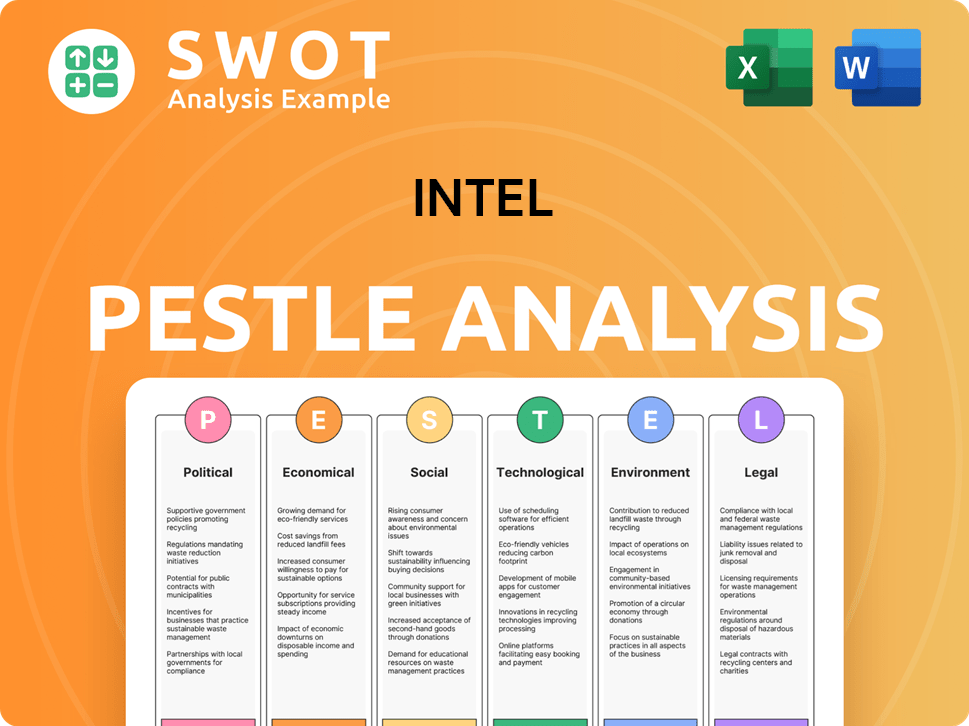
Who Sits on Intel’s Board?
The current board of directors at Intel plays a vital role in overseeing the company's management and acting on behalf of the shareholders. The board's size is designed to be between nine and fifteen members, with the exact number determined by a board resolution. This range cannot be changed without the approval of the stockholders. As of March 28, 2025, the board consisted of 11 members. This included a shift towards a board focused on the high-tech industry.
Regarding the voting structure, each holder of Intel's common stock is entitled to one vote per share in all director elections and on any other matters put to a stockholder vote. There are no cumulative voting rights for directors. The company's bylaws require a majority vote for director elections in uncontested elections, meaning each director must receive a majority of the votes cast. If an incumbent director does not receive a majority, they must offer their resignation to the board, which then decides whether to accept or reject it.
| Board Member | Title | Date Joined |
|---|---|---|
| Pat Gelsinger | CEO | February 2021 |
| Eric Meurice | Independent Director | December 2024 |
| Steve Sanghi | Independent Director | December 2024 |
Recent additions to the board include Eric Meurice, former President and CEO of ASML Holding N.V., and Steve Sanghi, Chairman and interim CEO of Microchip Technology Inc., both appointed as independent directors in December 2024. These appointments bring significant expertise in the semiconductor industry. In March 2025, Lip-Bu Tan, who was appointed CEO, also rejoined the board of directors. The board currently includes members with backgrounds in finance, investment, e-commerce, and semiconductors. If you're interested in understanding more about the company's strategic direction, you might find insights in an article about the Target Market of Intel.
Understanding who owns Intel, or Intel ownership, is crucial for investors and stakeholders. The board of directors, with its recent appointments, reflects a strategic focus on the semiconductor industry. Major shareholders influence the company's direction through their voting power.
- The board's size is set between nine and fifteen members.
- Shareholders have one vote per share.
- Recent appointments bring deep semiconductor industry expertise.
- The board structure is designed to represent shareholder interests.
Intel Business Model Canvas
- Complete 9-Block Business Model Canvas
- Effortlessly Communicate Your Business Strategy
- Investor-Ready BMC Format
- 100% Editable and Customizable
- Clear and Structured Layout
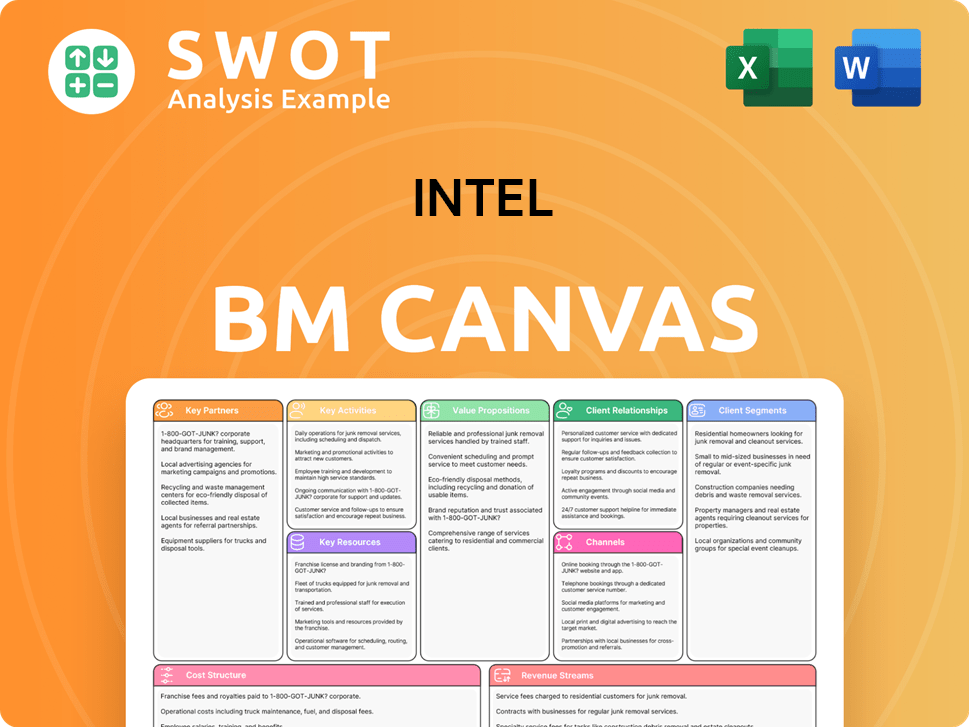
What Recent Changes Have Shaped Intel’s Ownership Landscape?
Over the past few years, Intel's leadership experienced significant shifts. In December 2024, CEO Pat Gelsinger retired, leading to interim co-CEOs David Zinsner and Michelle Johnston Holthaus, with Frank D. Yeary as interim Executive Chair. This occurred amidst industry competition, particularly from companies like TSMC and Nvidia. In March 2025, Lip-Bu Tan was appointed as the new Chief Executive Officer. Subsequently, in April 2025, Tan restructured leadership, with key chip divisions reporting directly to him, and Sachin Katti promoted to Chief Technology Officer and head of AI.
In terms of ownership and financial strategy, Intel has engaged in share buybacks. From 2019 to 2023, Intel spent $30.2 billion on stock buybacks. As of March 29, 2025, Intel had an authorization to repurchase up to $110.0 billion in common stock, with $7.24 billion remaining. However, the buyback yield hit a 5-year low of -0.5% in December 2024. Furthermore, Intel is set to receive up to $8.5 billion in CHIPS subsidies. The company announced a suspension of its dividend starting in the fourth quarter of 2024.
In April 2025, Intel announced a strategic investment by Silver Lake in Altera, with Raghib Hussain as CEO of Altera, and the sale of a 51% stake to Silver Lake. This move aims to optimize the company's portfolio and focus on core strengths.
The ownership of Intel is primarily composed of institutional investors, with a significant portion of shares held by large financial institutions. This structure is typical for a publicly traded company like Intel.
Intel stock performance is influenced by various factors, including market conditions, industry trends, and the company's financial results. Investors closely monitor Intel stock as an indicator of the company's health.
Key executives, including the CEO and CFO, play a crucial role in shaping the company's strategy and financial performance. Their decisions directly impact Intel's direction.
Intel's market position is constantly evolving due to competition and technological advancements. The company's ability to innovate and adapt is critical for its success.
Intel Porter's Five Forces Analysis
- Covers All 5 Competitive Forces in Detail
- Structured for Consultants, Students, and Founders
- 100% Editable in Microsoft Word & Excel
- Instant Digital Download – Use Immediately
- Compatible with Mac & PC – Fully Unlocked
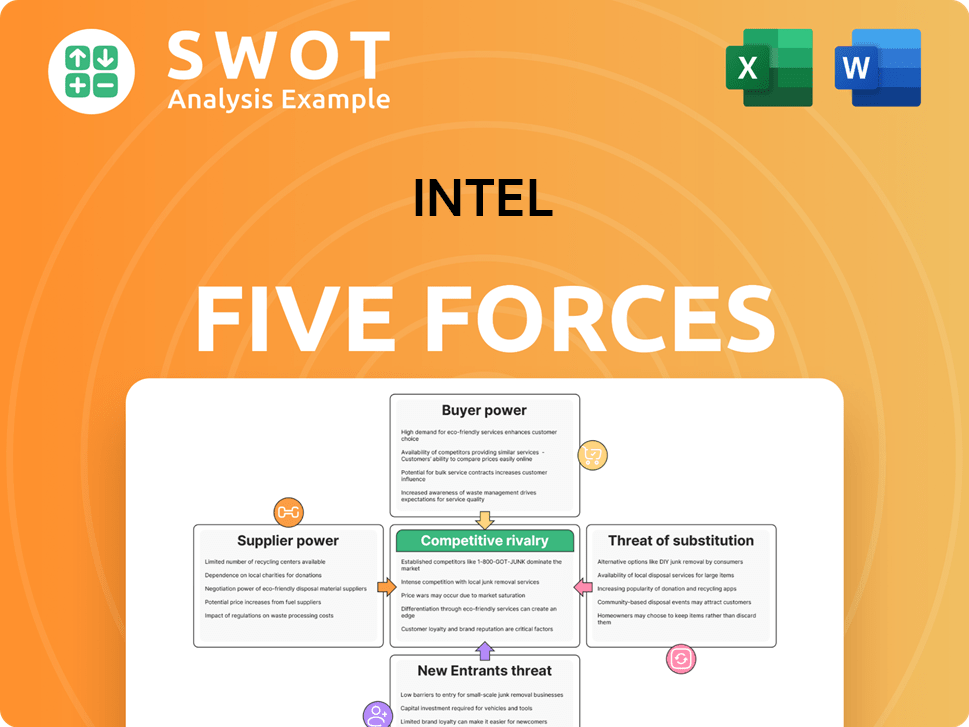
Related Blogs
- What are Mission Vision & Core Values of Intel Company?
- What is Competitive Landscape of Intel Company?
- What is Growth Strategy and Future Prospects of Intel Company?
- How Does Intel Company Work?
- What is Sales and Marketing Strategy of Intel Company?
- What is Brief History of Intel Company?
- What is Customer Demographics and Target Market of Intel Company?
Disclaimer
All information, articles, and product details provided on this website are for general informational and educational purposes only. We do not claim any ownership over, nor do we intend to infringe upon, any trademarks, copyrights, logos, brand names, or other intellectual property mentioned or depicted on this site. Such intellectual property remains the property of its respective owners, and any references here are made solely for identification or informational purposes, without implying any affiliation, endorsement, or partnership.
We make no representations or warranties, express or implied, regarding the accuracy, completeness, or suitability of any content or products presented. Nothing on this website should be construed as legal, tax, investment, financial, medical, or other professional advice. In addition, no part of this site—including articles or product references—constitutes a solicitation, recommendation, endorsement, advertisement, or offer to buy or sell any securities, franchises, or other financial instruments, particularly in jurisdictions where such activity would be unlawful.
All content is of a general nature and may not address the specific circumstances of any individual or entity. It is not a substitute for professional advice or services. Any actions you take based on the information provided here are strictly at your own risk. You accept full responsibility for any decisions or outcomes arising from your use of this website and agree to release us from any liability in connection with your use of, or reliance upon, the content or products found herein.